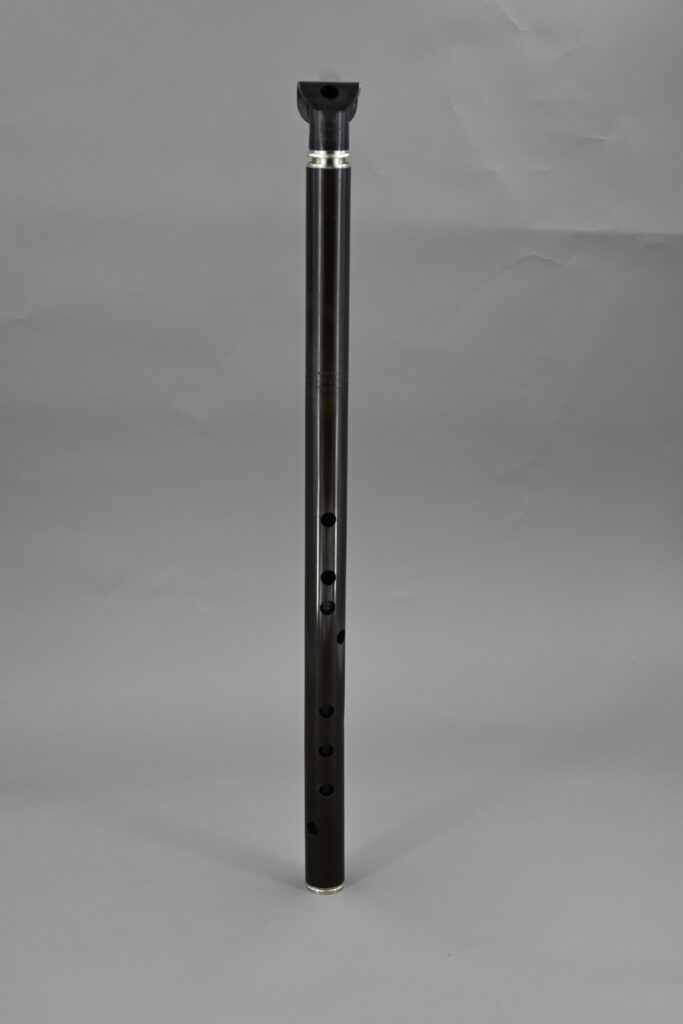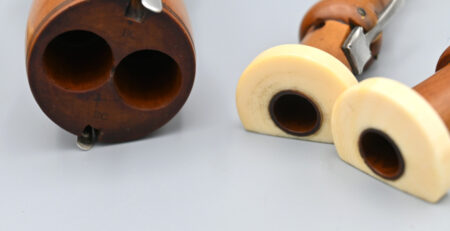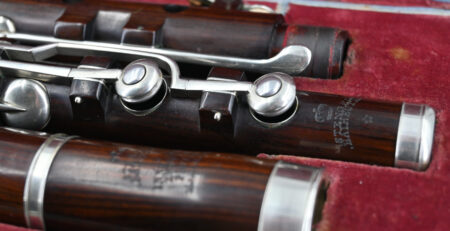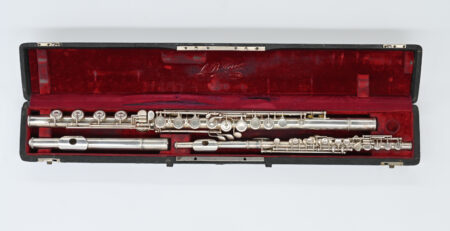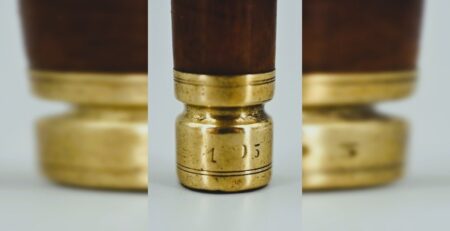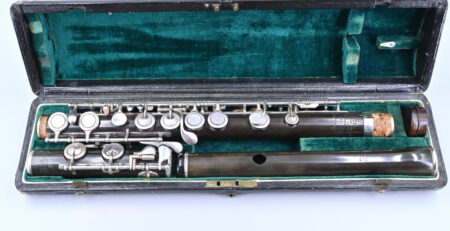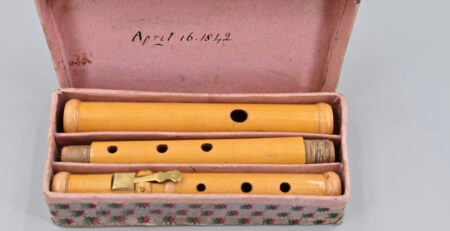Ebonite
Ebonite was invented in 1839 by Charles Goodyear. He found that he could obtain a black material, which was rigid rather than elastic, by mixing together and heating latex and sulphur. The result was a hard rubber and it was given the name ebonite because both the colour and consistency were very similar to ebony (heartwood).
Ebonite would go on to be used in the manufacture of many objects including high-quality fountain pens, bowling balls, clocks, electrical insulating material or saxophone and clarinet mouthpieces.
Ebonite was also employed as an alternative material for making flute bodies. It seems it was first used in flute making in the mid-1800s by New-York-based Alfred G. Badger and other makers followed suit. It was thought to be very advantageous as a material because it did not absorb water, was durable and difficult to break. It was also a bad conductor of heat which meant that alterations in air temperature would not affect the pitch of the flute. It was therefore deemed highly suitable for military instruments,
The famous ‘Giorgi Flute’ was made entirely of ebonite (with metal rings) rather than wood by the London firm Joseph WALLIS & Son Limited in around 1900. It was not only constructed in this new hard rubber material, but had no keys! Boosey & Co employed ebonite to make many of their instruments, but especially military models, including a bassoon made entirely of ebonite or with just an ebonite wing.
